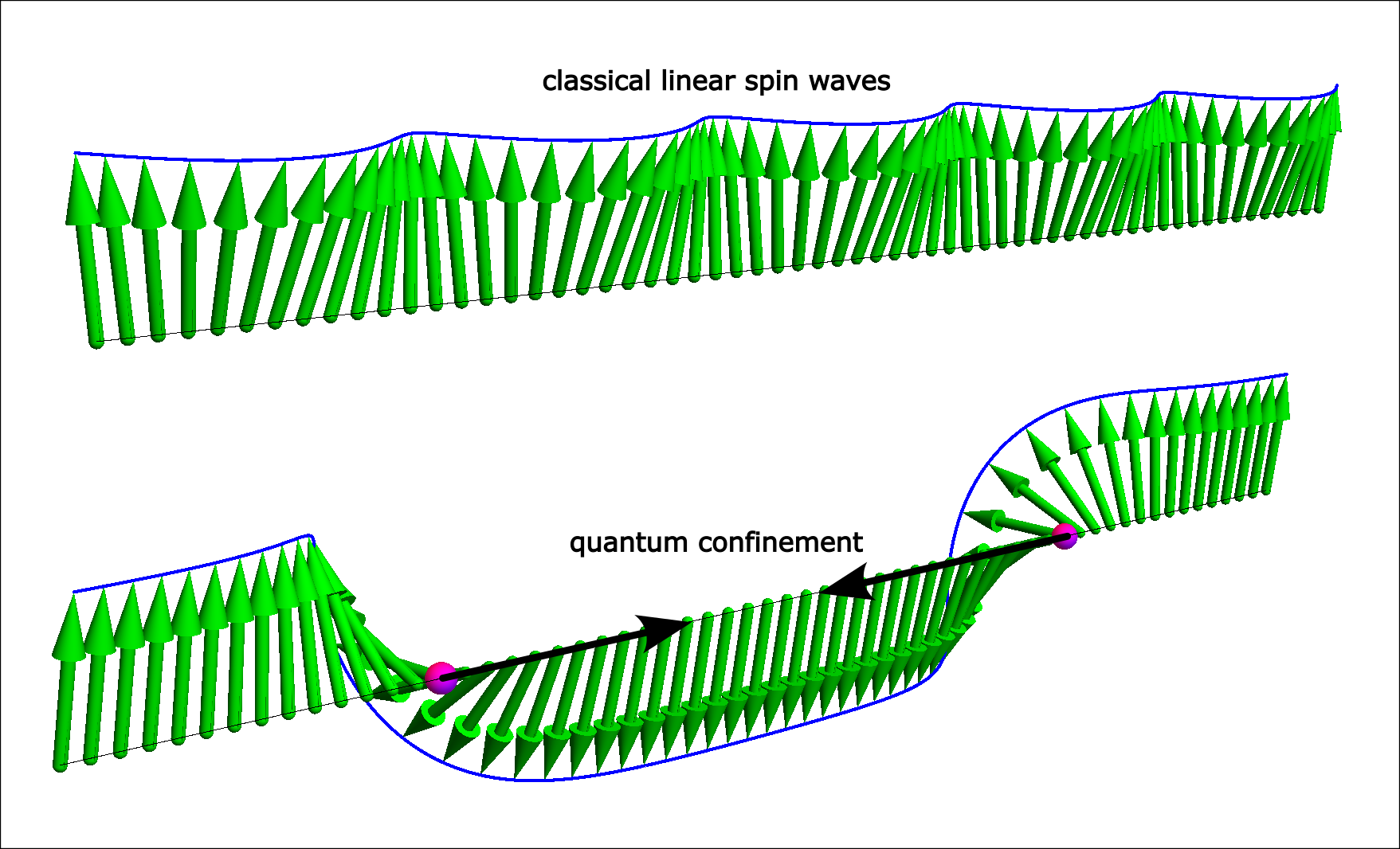The beginning
It all started during his masters. Harry was able to work with ISIS scientist Dr Frank Krüger on some odd neutron scattering data that didn't fit into the conventional theories of classical magnets as expected. They found unconventional (quantum-like) excitations in what should have been a classical material. This started the ball rolling towards a realisation that there are dynamics which don't fit the conventional theory. It wasn't long after this that Harry's first paper was released. In this he studied a material where spins produce domain walls. These become confined like quantum mechanical particles rather than classical linear spins (see image right). With this research, he demonstrated that quantum phenomena can be present in classical materials.
A cold conundrum
Following this research he focussed on using spin waves to understand the magnetic structure of CaFe2O4 at low temperatures. This has been the source of some debate and differs from the simpler high temperature structure. To investigate this further, Harry performed inelastic neutron scattering on the MERLIN spectrometer at ISIS to measure the spin waves at both high and low temperature. By using a model based on a mathematical language called “Green's functions", Harry was able to show that the two phases were not separate structures, but instead a frozen and unfrozen version of the same structure. At high temperatures the ions are able to freely change their spins from pointing up to pointing down, due to having lots of thermal energy.
However, once the temperature falls, less energy is available and so the spins become stuck in their positions. Therefore, when the temperature is lowered, the conventional structure is frozen into place mid-fluctuation, causing the uncharacteristic domain walls to form as the spins become stuck in their positions. Harry described this experiment as “a proving ground for Green's function. To see that it worked for spin systems that can already be described by the standard approaches." Since it worked, he was able to move on to test it on more difficult structures.

Limitations of a theory
The standard linear spin wave theory can be used, as described, for classical magnets. However, for anything that falls outside of this description it often becomes more difficult to describe them. It was discovered that there are two limitations with this theory that don't allow it to be all inclusive. Firstly, that magnetic excitations can become non-linear due to quantum fluctuations (making them no longer fit the model). Secondly, there can be more than two types of excitation per ion, which the standard theory does not take into account. In his first paper, Harry worked on materials that exploited the first flaw. For the rest of his PhD however, he delved much deeper into the second.
More excitations
The next hurdles to jump were materials with both a spin and an orbital momentum (previously only spin momentum was considered, depicted by the arrows in the diagrams). For this experiment, neutron scattering data, were compared to the sample's crystallography to predict the different excitation levels possible within the structure of VI3. From this, they were able to use Green's functions to incorporate all of the ion's energy levels to model the outcome. In the conventional approach it is usually assumed that only two states are taken note of: ions are either in the ground state or not. But this method allowed Harry to push beyond standard spin wave theory and include the low energy states of this material.
Greens is go
In the grand finale of his PhD research, Harry used Green's function to describe the most general situation he could. He was able to use the materials studied in his previous work, using Green's to model spin waves in magnets with complicated magnetic structures. He also demonstrated that it is possible to gain insight into exotic amplitude fluctuations - spin waves that are analogous to Higgs particles - in magnetic materials. This successful model is now being used by other groups to characterise their own unconventional spin waves. As well as this, there is hope that in the future that we will have a code that will allow ISIS users and the wider community to use the model more easily.
Further information:
Harry's thesis can be found here- https://era.ed.ac.uk/handle/1842/39118
